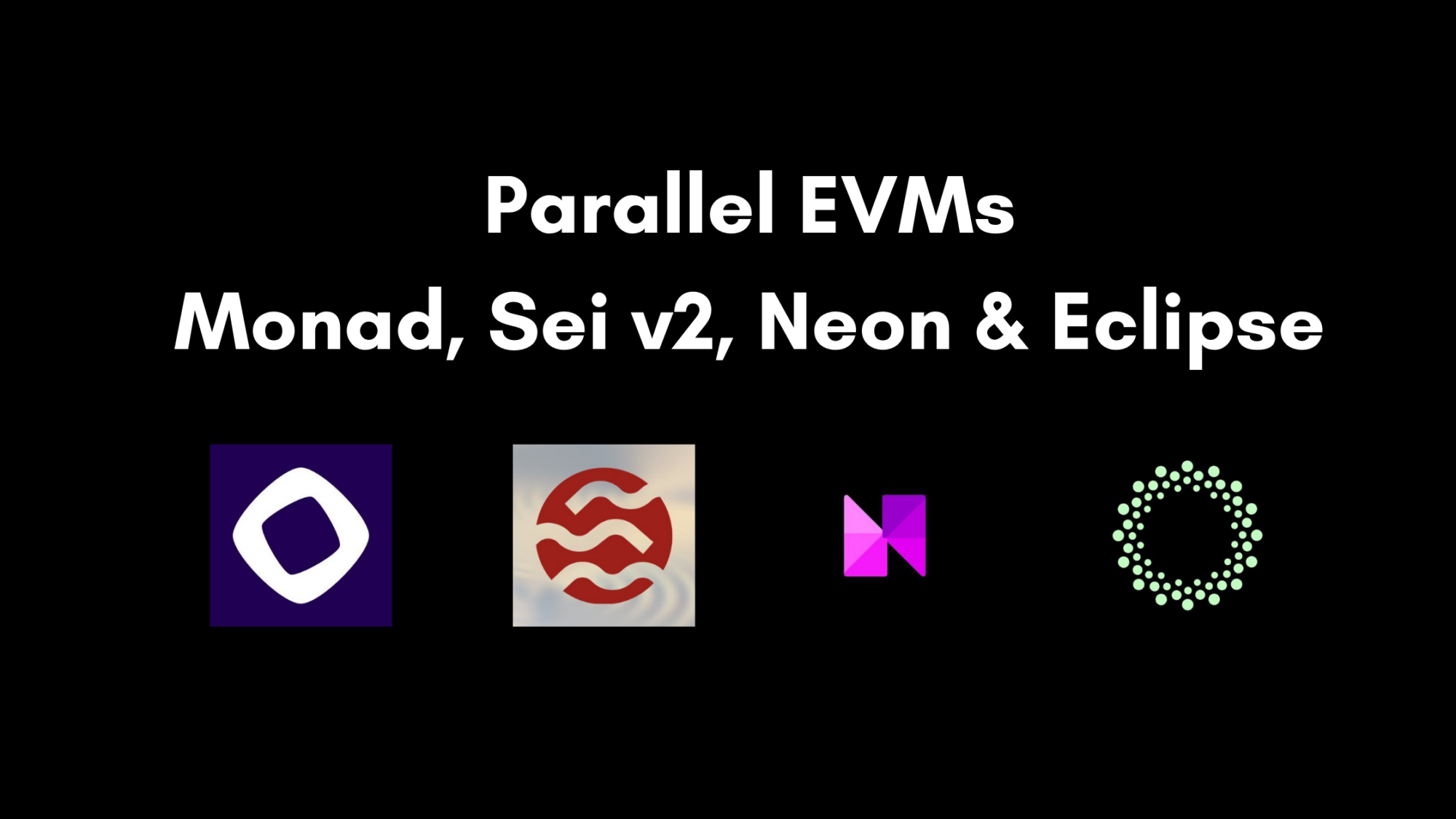What is parallel EVM?
A Parallel EVM, or Parallel Ethereum Virtual Machine, is an advanced iteration of the traditional Ethereum Virtual Machine (EVM) used in the Ethereum blockchain. The key distinction between a Parallel EVM and the standard EVM lies in their approach to processing transactions and executing smart contracts. While the standard EVM processes transactions sequentially, a Parallel EVM introduces parallel processing capabilities, allowing multiple transactions to be processed simultaneously. Diagram of Parallel EVMs
This parallel transaction processing is compatible with the Ethereum Virtual Machine, aiming to bring together the best features from both the Solana and Ethereum blockchains’ designs. The introduction of Parallel EVMs is part of the ongoing efforts to improve scalability and performance in blockchain networks, especially for decentralized applications (dApps) built on the Ethereum platform.
There is no single predominant Parallel EVM, instead, there are various implementations, each with its own approach to achieving better scalability through parallel processing. Some of the leading parallel EVM blockchains include Neon, Sei, and Monad. These platforms are designed to enable faster, cheaper, and more efficient blockchain networks by overcoming the limitations of sequential transaction processing inherent in traditional EVMs.
Expanding on the concept of Parallel EVMs, they are essentially an innovative approach to enhance the scalability and efficiency of blockchain networks. The traditional Ethereum Virtual Machine (EVM) processes transactions one by one, which can lead to bottlenecks as the network grows and transaction volume increases. In contrast, Parallel EVMs allow for multiple transactions to be processed at the same time, which can significantly improve the throughput and performance of the network.  Major projejcts of Parallel EVMs
Major projejcts of Parallel EVMs
Here’s a deeper look into the components and potential of Parallel EVMs:
Parallel Processing: At its core, Parallel EVMs utilize parallel processing techniques to execute multiple smart contracts or transactions concurrently. This is akin to having multiple workers handling tasks simultaneously, rather than a single worker processing one task at a time.
Scalability: By enabling parallel transaction processing, Parallel EVMs aim to solve the scalability issues faced by the Ethereum network. This could lead to faster transaction times and lower gas fees, making the network more attractive for users and developers. Interoperability: Some implementations of Parallel EVMs are designed to be compatible with the existing Ethereum network. This means that developers can build decentralized applications (dApps) that take advantage of parallel processing while still being able to interact with the broader Ethereum ecosystem.
Leading Implementations: There are several leading parallel EVM blockchains, such as Neon, Sei, and Monad. Each of these platforms has its own unique approach to parallel processing and aims to contribute to the evolution of the blockchain technology.
Challenges: While Parallel EVMs offer many benefits, there are also challenges associated with their implementation. These include ensuring security and consistency across parallel transactions, managing the complexity of parallel execution, and maintaining compatibility with existing smart contracts and dApps.
Overall, Parallel EVMs represent a significant step forward in the development of blockchain technology. They offer a promising solution to some of the limitations of current blockchain infrastructures and could play a crucial role in the future of decentralized networks. As the technology matures, we may see more widespread adoption of Parallel EVMs, leading to more efficient and scalable blockchain systems.





































